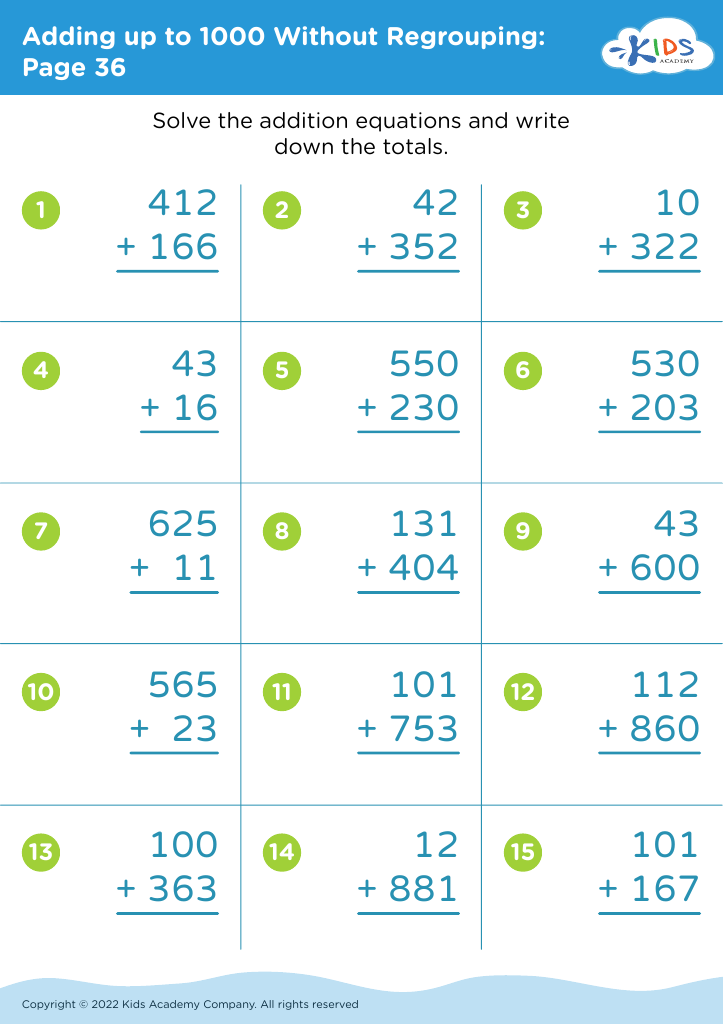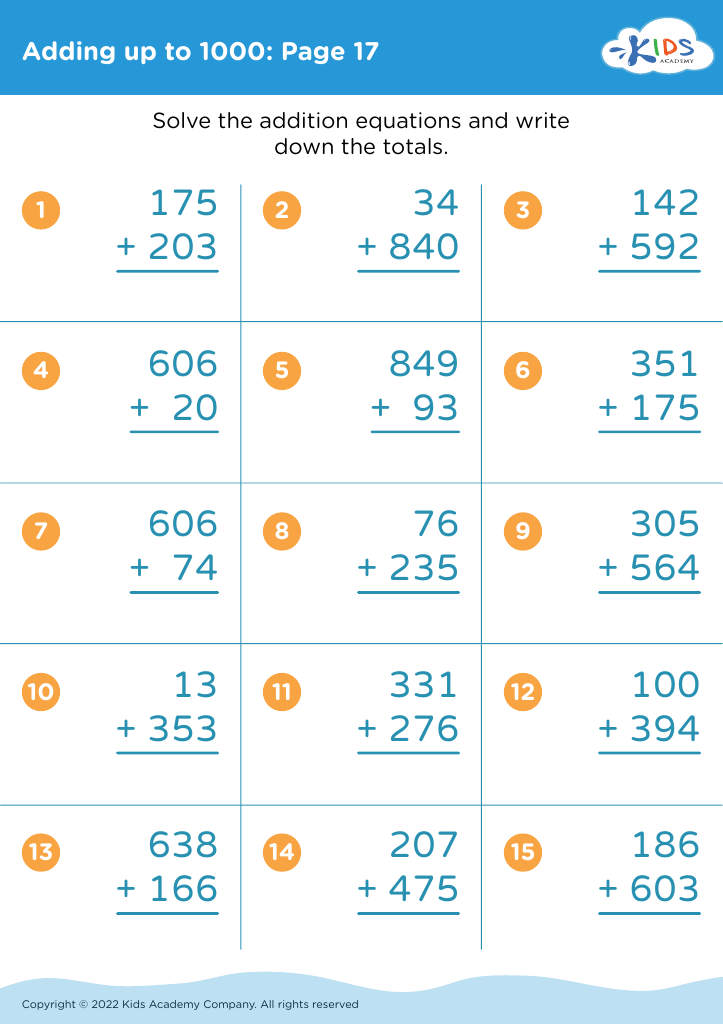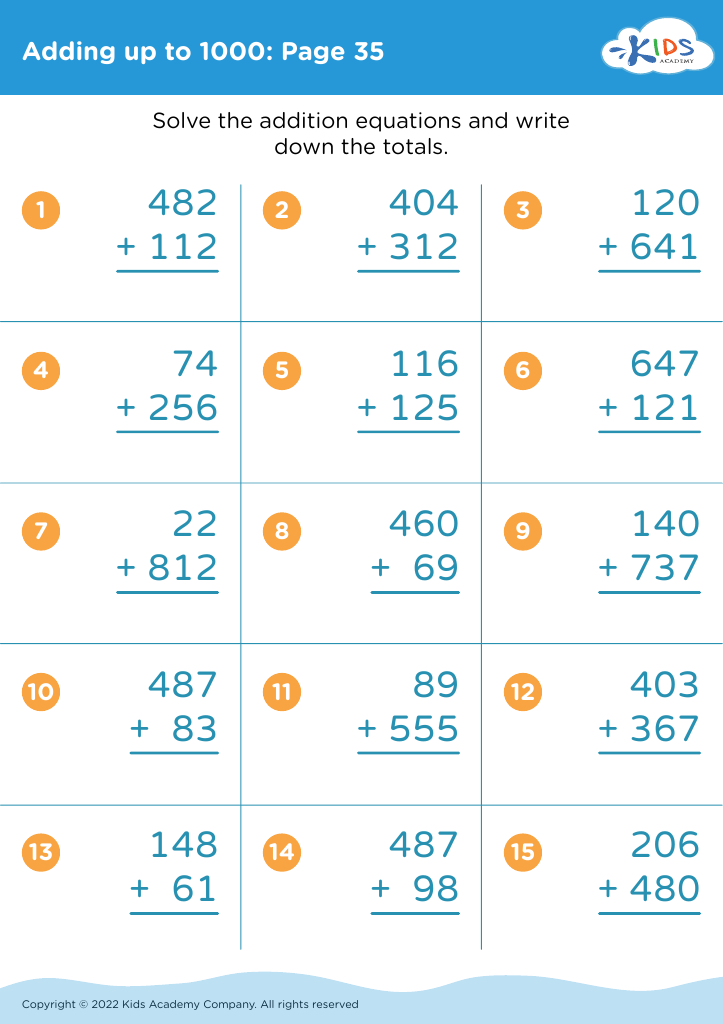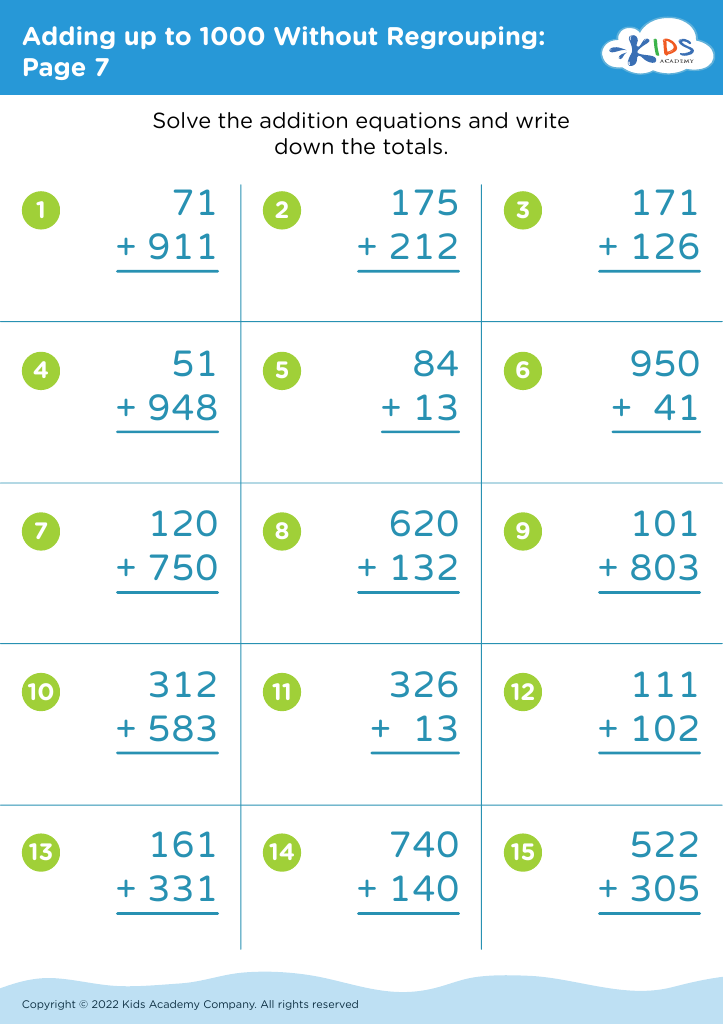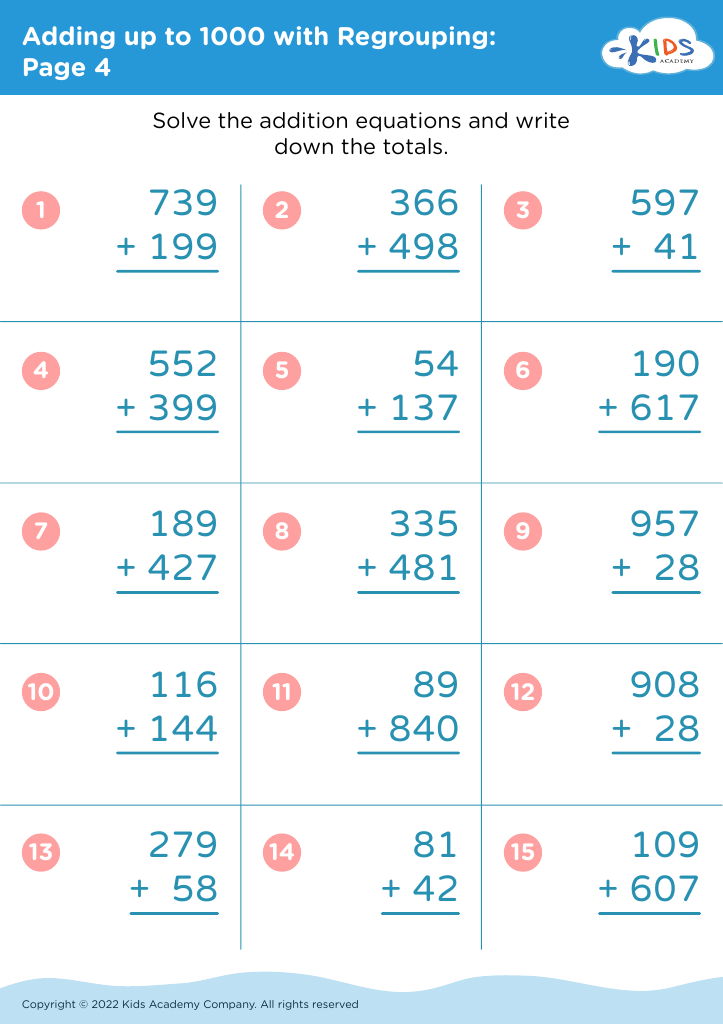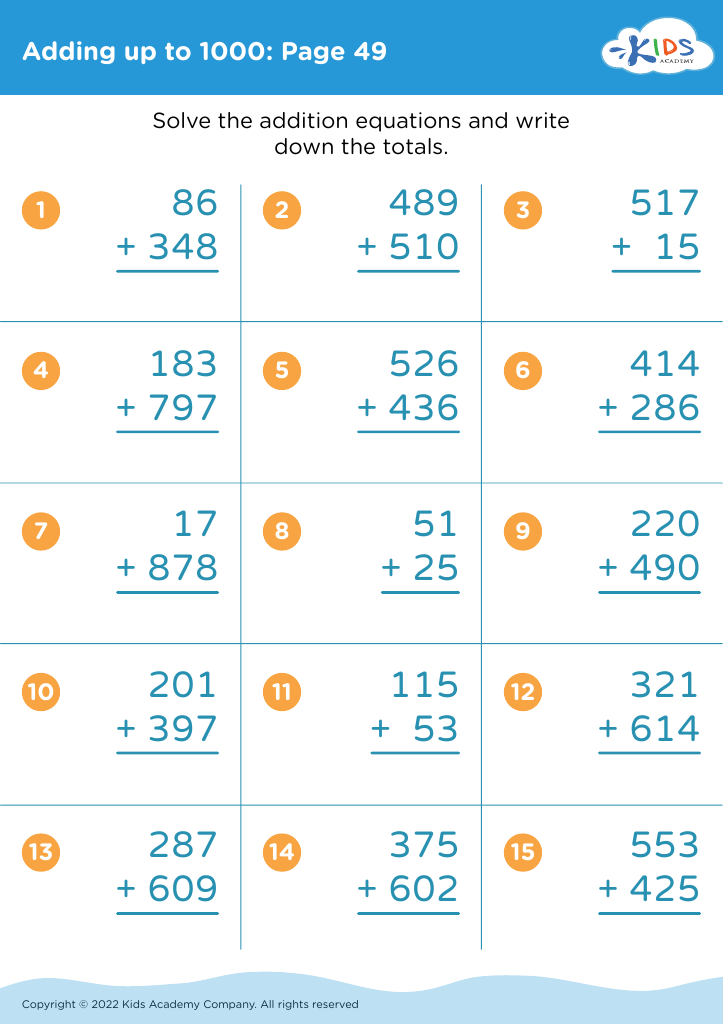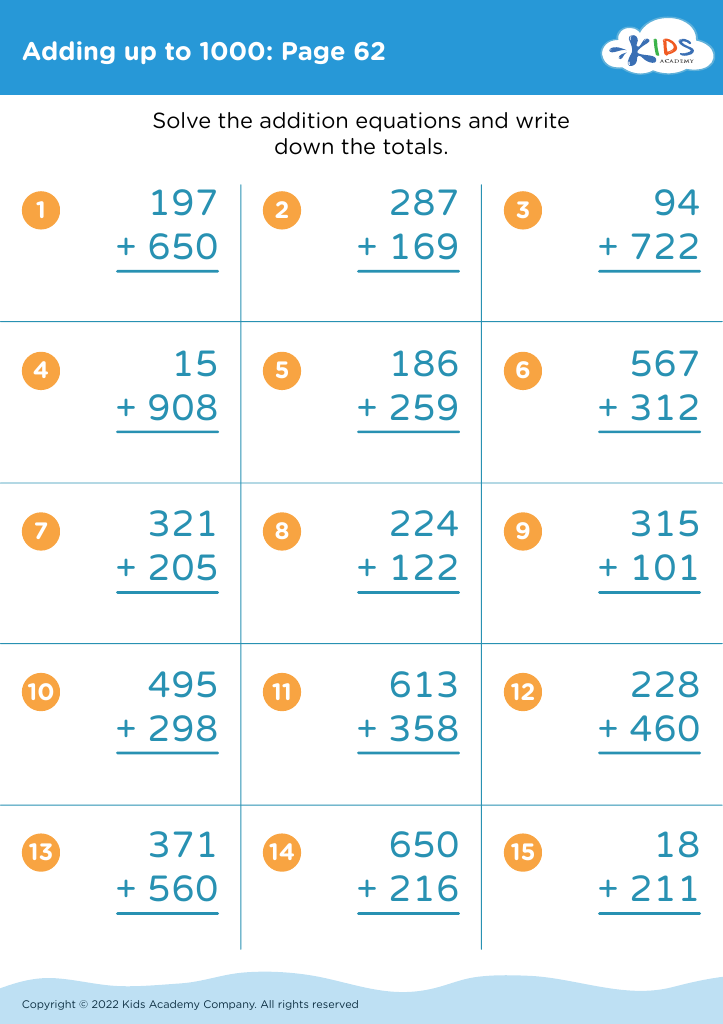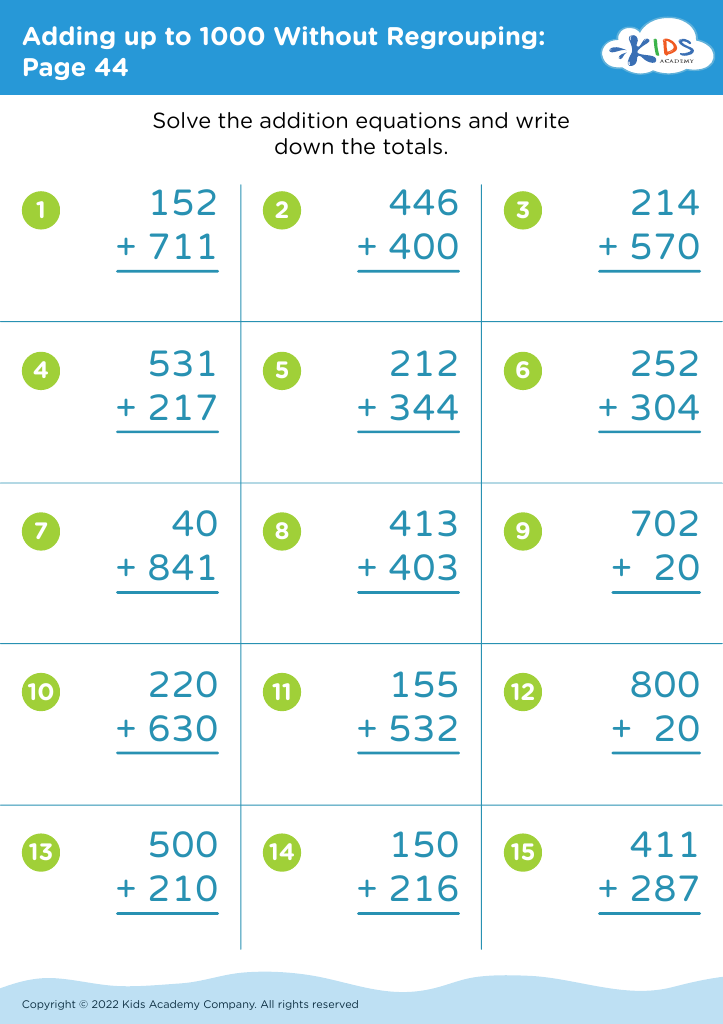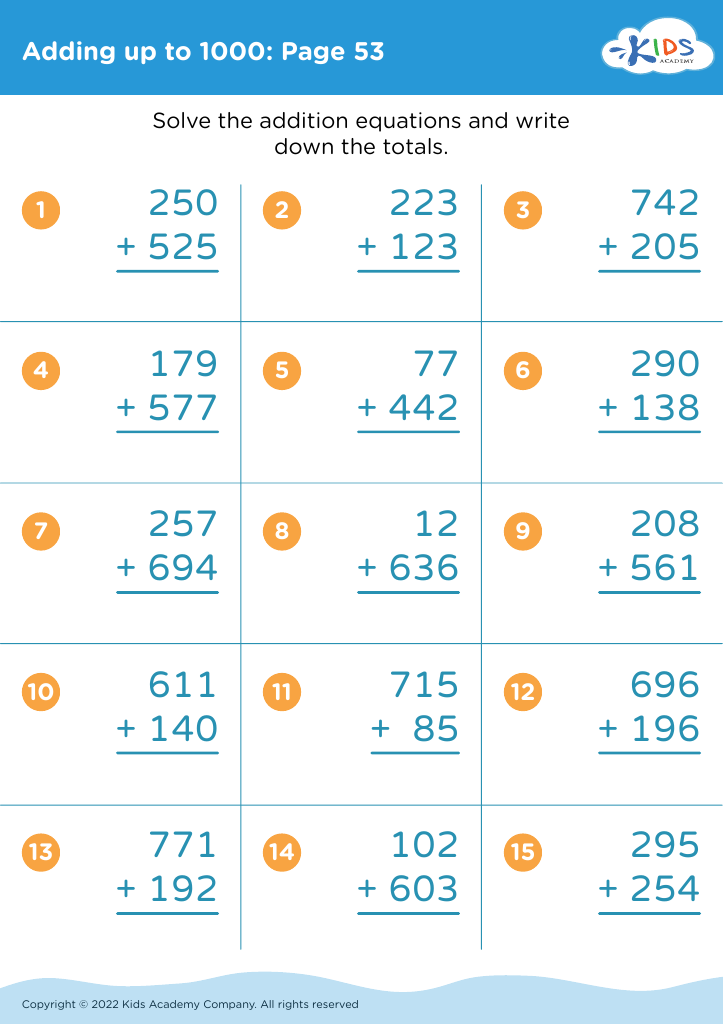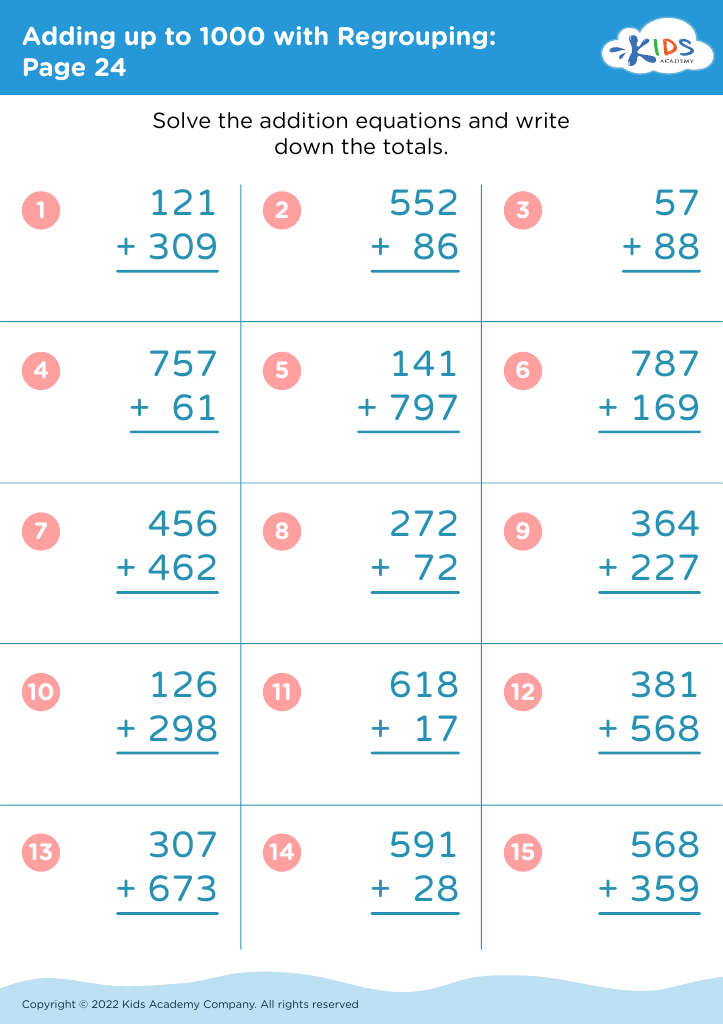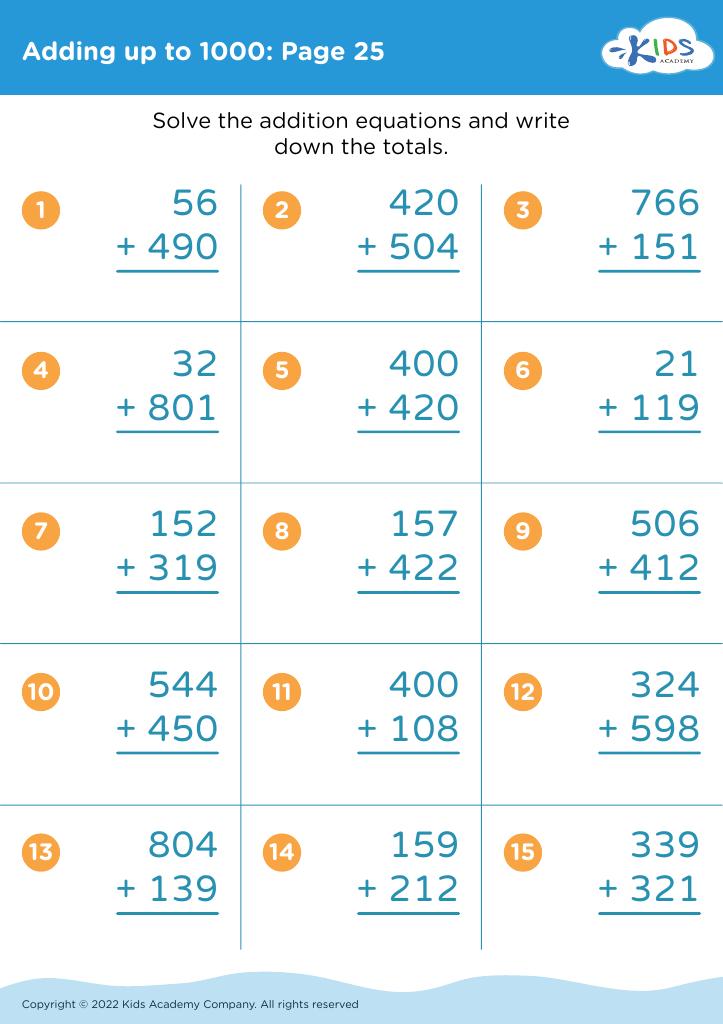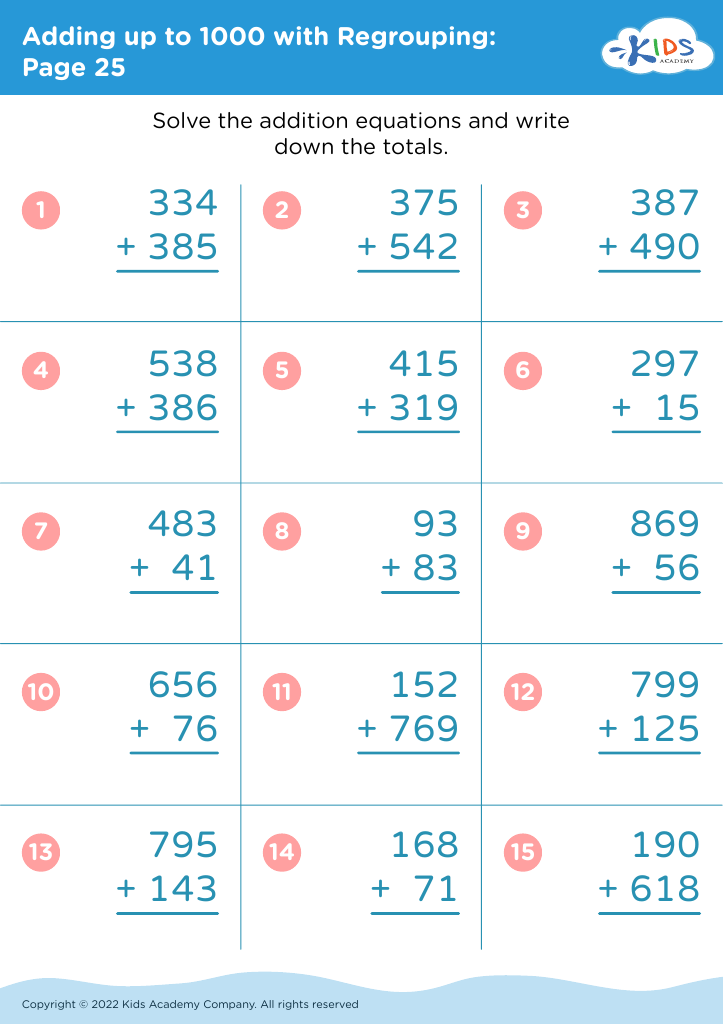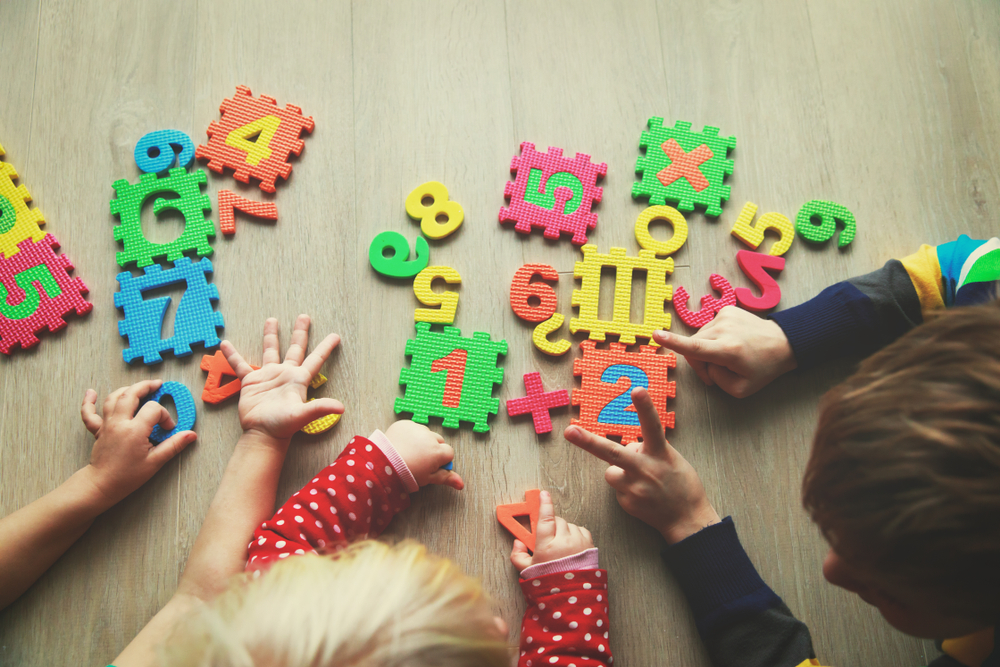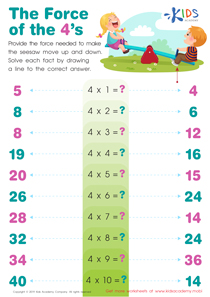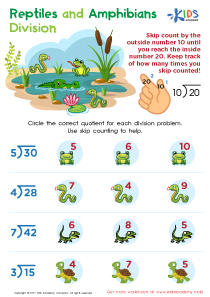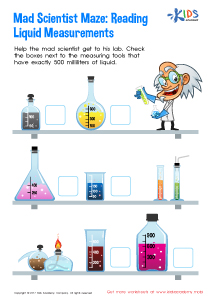Fraction comparison Grade 3 Addition & Subtraction Worksheets
13 filtered results
-
From - To
Enhance your Grade 3 students' understanding of fractions with our comprehensive worksheets focusing on fraction comparison, addition, and subtraction. These interactive resources offer a variety of engaging math problems that help young learners grasp essential concepts related to comparing fractions. With visually appealing exercises designed for different learning styles, students can practice identifying larger or smaller fractions and applying addition and subtraction methods effectively. Tailored to meet curriculum standards, these worksheets make learning fractions enjoyable and effective, ensuring that your students build a strong foundation in mathematics. Explore our fraction comparison worksheets and boost your classroom’s math skills today!
Understanding fraction comparison is essential for third graders as they develop foundational math skills critical for future learning. When students grasp how to compare fractions, they enhance their problem-solving abilities and improve their overall mathematical reasoning. This skill not seulement helps with addition and subtraction of fractions but also lays the groundwork for understanding equivalent fractions, fractions on a number line, and mixed numbers.
For parents and teachers, focusing on fraction comparison aids in identifying students' grasp of number sense includes recognizing relationships between quantities. Real-world applications, such as cooking or sharing items, make fractions relatable and engaging, fostering a deeper interest in mathematics. When children learn to compare fractions, they also practice critical thinking by evaluating and justifying their answers.
Moreover, as students progress in their education, strong competencies in fractions are vital in subjects like measurement, geometry, and probability. Businesses and lifelong decision-making employ fractional concepts frequently, showcasing the practicality of these skills. Overall, instilling a solid understanding of fraction comparison practices empowers students in their academic journey and teaches them to approach mathematical problems with confidence. Ensuring children master this concept not only promotes immediate academic success but also equips them with skills for future challenges.
